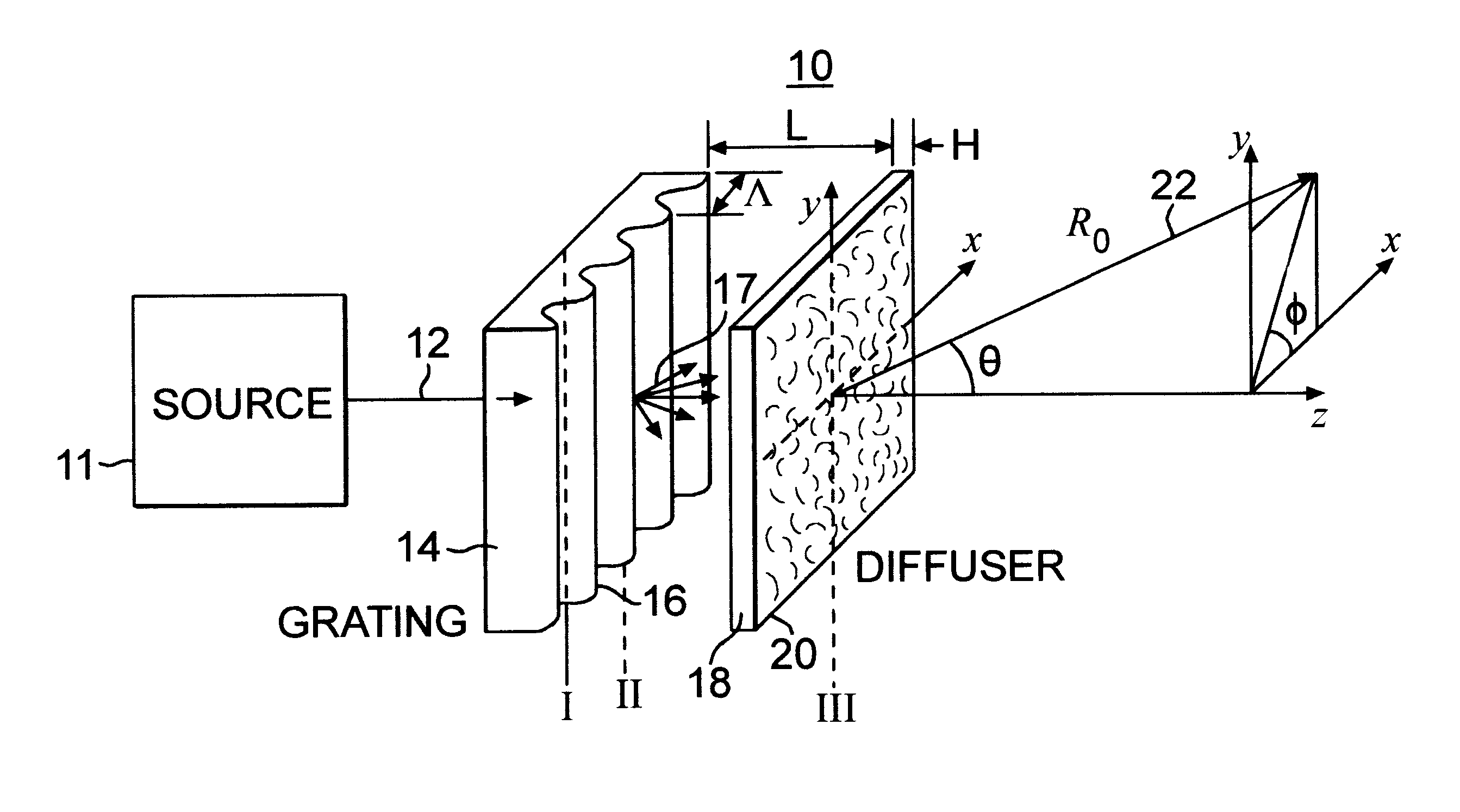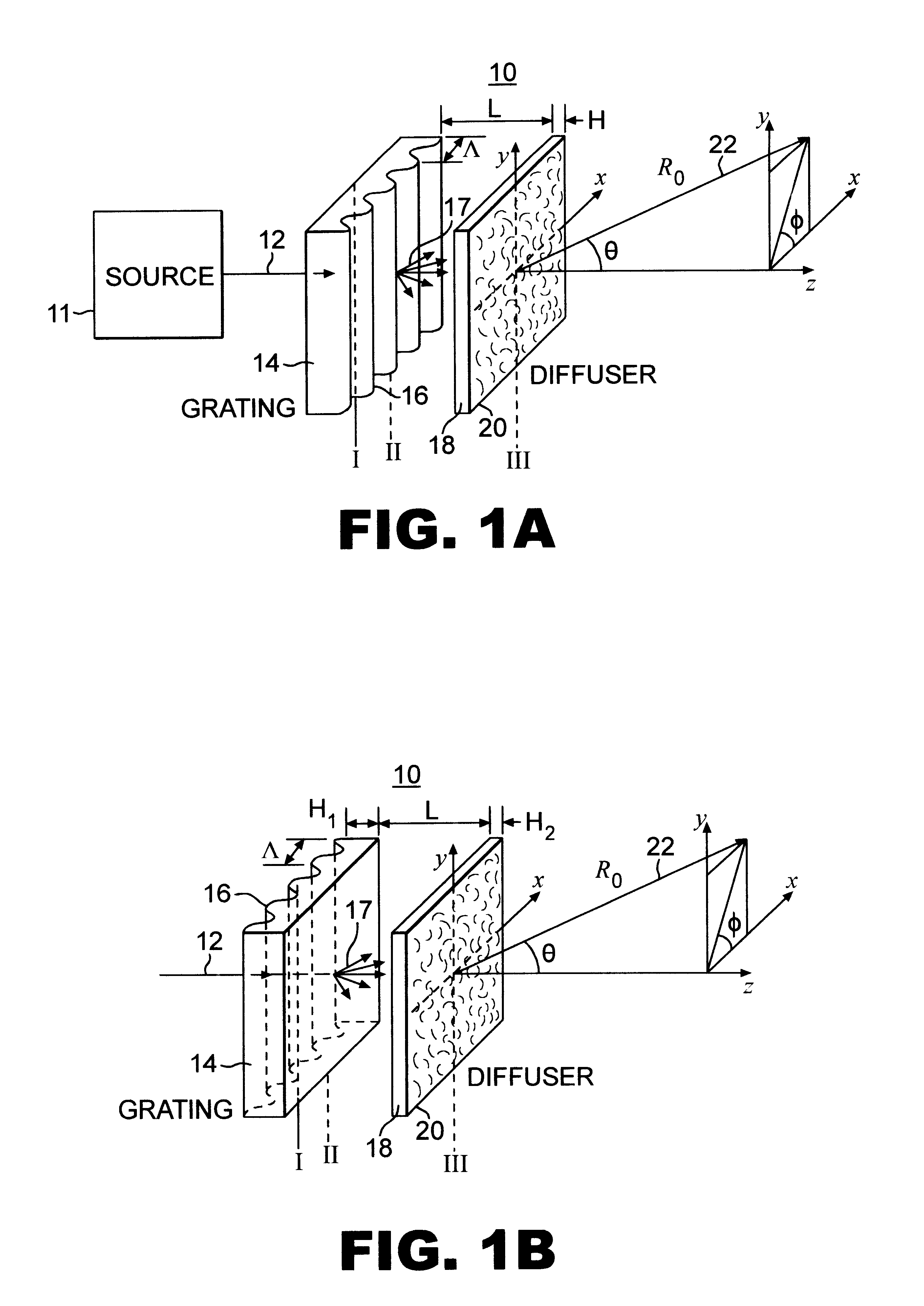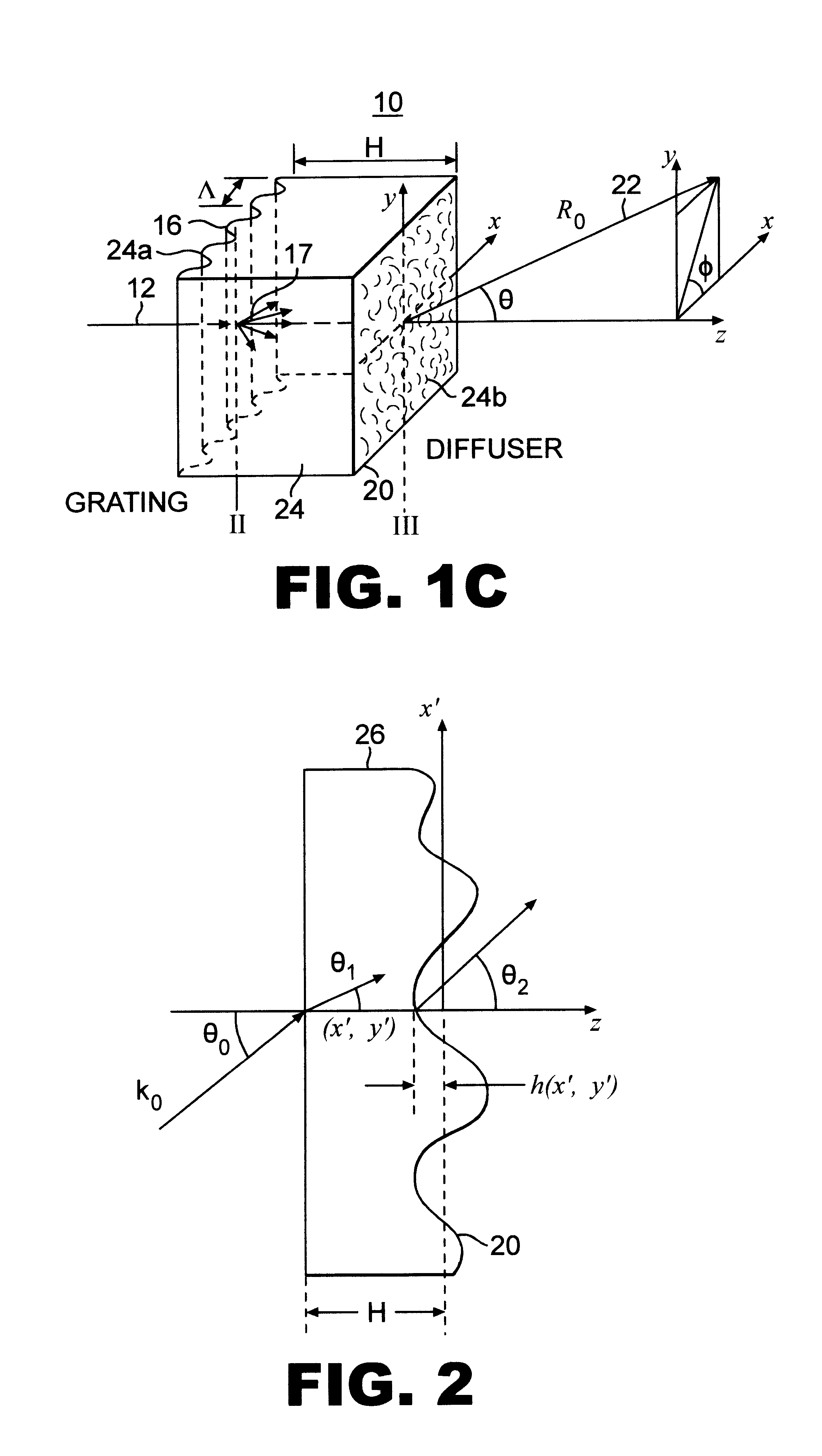Optical system for diffusing light
a technology of optical system and light, applied in the field of optical system, can solve the problems of poor efficiency of typical commercially available screens with lenticular array, 30% or less, undesirable color banding and white and dark lines, expensive and unaesthetic,
- Summary
- Abstract
- Description
- Claims
- Application Information
AI Technical Summary
Benefits of technology
Problems solved by technology
Method used
Image
Examples
example 2
The optimum diffraction orders provided by the diffraction grating 14 in system 10 may be provided by more than one diffractive element, such as shown for example in the system 28 of FIG. 11A. Multiple diffraction gratings can be used to provide additional diffraction orders to the diffuser or when it is difficult to fabricate a single grating having the desired number of orders at the desired multiple wavelengths, such as more than 5 or 6 optimum orders at three wavelengths. System 28 operates the same as system 10 except that two diffraction gratings 14a and 14b are used with diffuser 18, instead of a single diffraction grating. Diffraction gratings 14a and 14b may be on different optical elements or two surfaces of the same optical element. In this example, a second grating 14b with a 15.degree. diffraction angle is added to the system of the previous example, where grating 14a is a 5.degree. grating oriented as the grating shown in FIG. 1A, and grating 14b and diffuser are orien...
PUM
 Login to View More
Login to View More Abstract
Description
Claims
Application Information
 Login to View More
Login to View More - R&D
- Intellectual Property
- Life Sciences
- Materials
- Tech Scout
- Unparalleled Data Quality
- Higher Quality Content
- 60% Fewer Hallucinations
Browse by: Latest US Patents, China's latest patents, Technical Efficacy Thesaurus, Application Domain, Technology Topic, Popular Technical Reports.
© 2025 PatSnap. All rights reserved.Legal|Privacy policy|Modern Slavery Act Transparency Statement|Sitemap|About US| Contact US: help@patsnap.com



